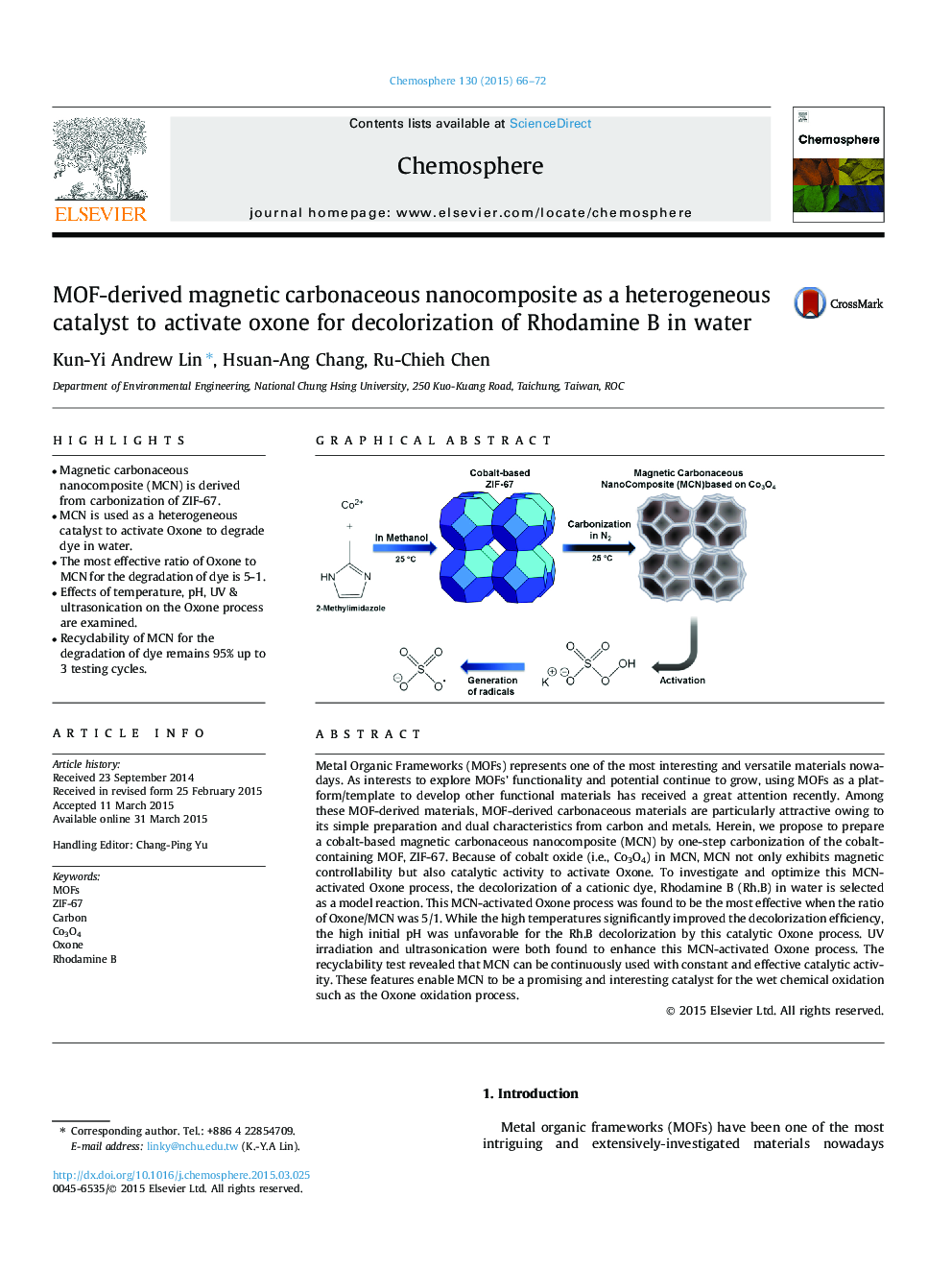| کد مقاله | کد نشریه | سال انتشار | مقاله انگلیسی | نسخه تمام متن |
|---|---|---|---|---|
| 4408325 | 1618841 | 2015 | 7 صفحه PDF | دانلود رایگان |

• Magnetic carbonaceous nanocomposite (MCN) is derived from carbonization of ZIF-67.
• MCN is used as a heterogeneous catalyst to activate Oxone to degrade dye in water.
• The most effective ratio of Oxone to MCN for the degradation of dye is 5–1.
• Effects of temperature, pH, UV & ultrasonication on the Oxone process are examined.
• Recyclability of MCN for the degradation of dye remains 95% up to 3 testing cycles.
Metal Organic Frameworks (MOFs) represents one of the most interesting and versatile materials nowadays. As interests to explore MOFs’ functionality and potential continue to grow, using MOFs as a platform/template to develop other functional materials has received a great attention recently. Among these MOF-derived materials, MOF-derived carbonaceous materials are particularly attractive owing to its simple preparation and dual characteristics from carbon and metals. Herein, we propose to prepare a cobalt-based magnetic carbonaceous nanocomposite (MCN) by one-step carbonization of the cobalt-containing MOF, ZIF-67. Because of cobalt oxide (i.e., Co3O4) in MCN, MCN not only exhibits magnetic controllability but also catalytic activity to activate Oxone. To investigate and optimize this MCN-activated Oxone process, the decolorization of a cationic dye, Rhodamine B (Rh.B) in water is selected as a model reaction. This MCN-activated Oxone process was found to be the most effective when the ratio of Oxone/MCN was 5/1. While the high temperatures significantly improved the decolorization efficiency, the high initial pH was unfavorable for the Rh.B decolorization by this catalytic Oxone process. UV irradiation and ultrasonication were both found to enhance this MCN-activated Oxone process. The recyclability test revealed that MCN can be continuously used with constant and effective catalytic activity. These features enable MCN to be a promising and interesting catalyst for the wet chemical oxidation such as the Oxone oxidation process.
Figure optionsDownload as PowerPoint slide
Journal: Chemosphere - Volume 130, July 2015, Pages 66–72